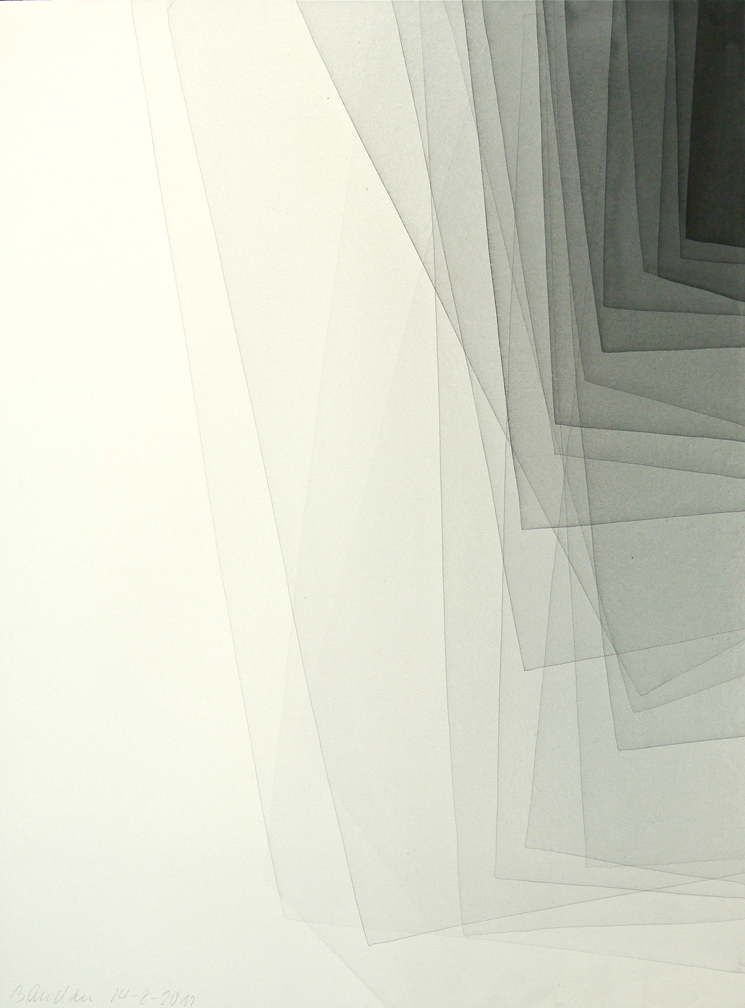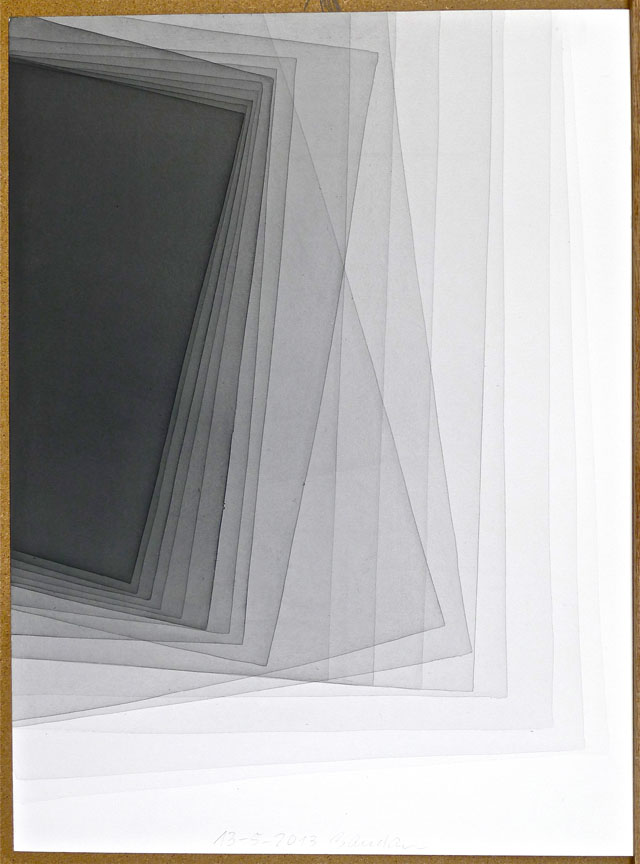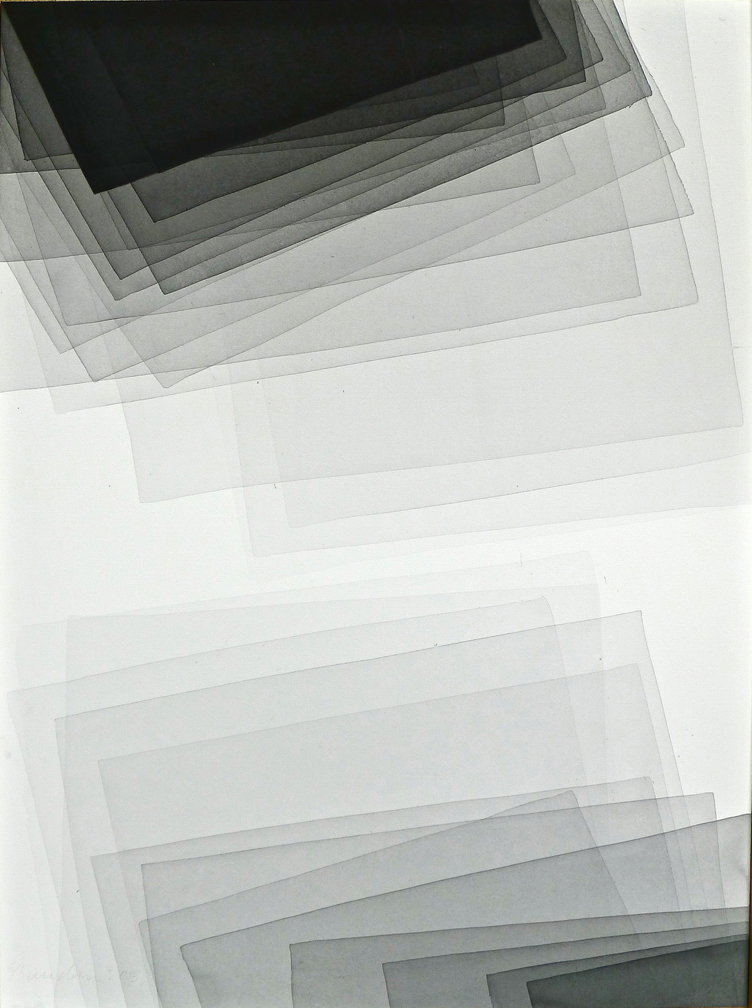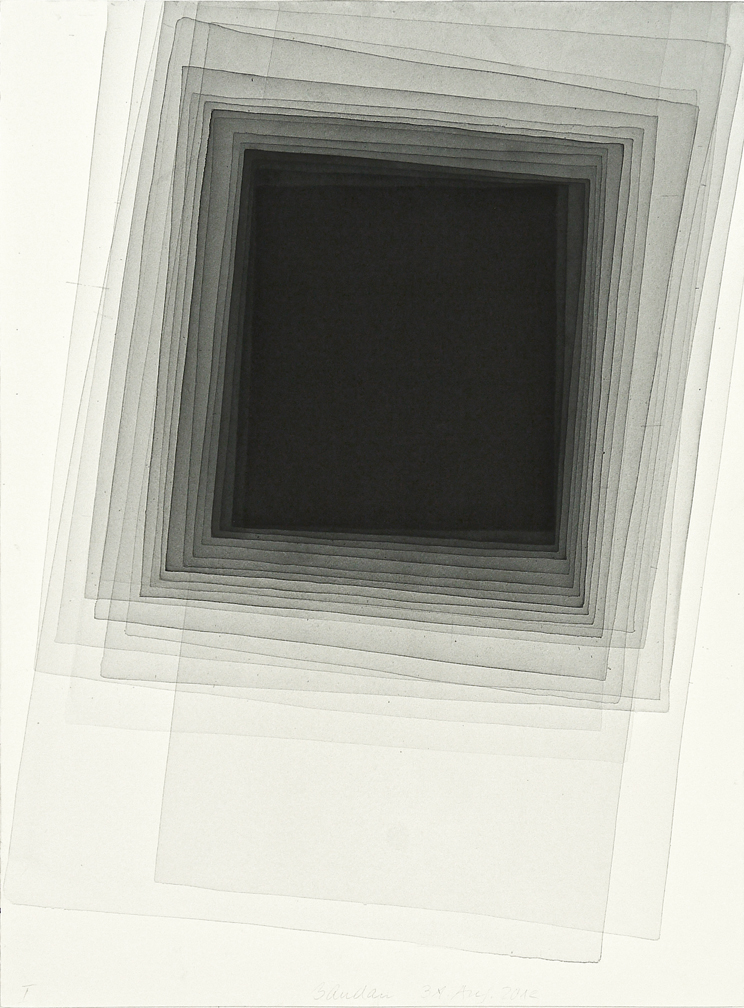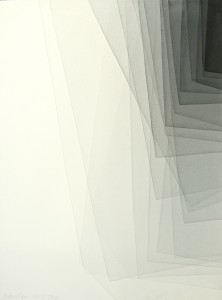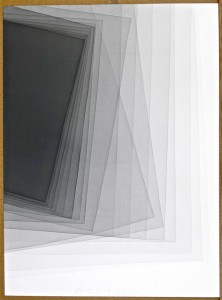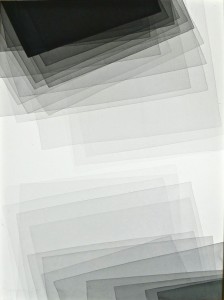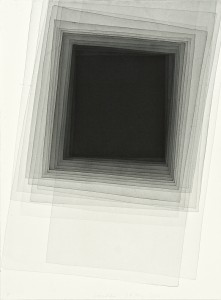Work
Press Release
Patricia Sweetow Gallery is pleased to welcome Irmel Kamp and Joachim Bandau from Germany in 2 solo exhibitions. Joachim Bandau will present Motion, new watercolors and sculpture. Irmel Kamp will present Modern Architecture, gelatin silver prints. The exhibitions open June 6th through July 27th. Reception for the artists is Thursday, June 6th, 5:30 – 7:30pm.
Joachim Bandau (b.1936) belongs to a protean group of German artists, along with Gerhard Richter, Joseph Beuys, and Imi Knoebel, who came out of the Kunstakademie Düsseldorf in 1961. Bandau has had an uninterrupted schedule of major museum and gallery exhibitions dating back fifty years.
It’s difficult to capture Bandau’s history in a few brief paragraphs, however there were key periods worth commenting upon. Beginning in the late 70ʼs, Bandau created steel and lead sculpture which were anchored to the ground by sheer weight, then eventually pushed underground. Prior to this, works were mobile, as in Documenta 7 in 1977, where polychrome sculptures were animated by mechanics made by Mercedes Benz. As with Carl Andreʼs development of the floor sculpture, and Bruce Naumanʼs concrete casting of the empty space under his chair, this new art form “Bodenskulptur”, Floor Sculpture, gave Bandau an independent and important context.
Following his inclusion in Documenta 6, 1977, came “Bunkers”, lead covers over wooden cores, then “Särge” (coffins), and “Mumienkästen” (boxes for mummies), which continued his referent to the human condition and form, along with Germany’s complex post-WWII re-invention. Moving into the 80ʼs, Bandau synthesized his political and social commentaries in linear, geometric shapes, one such, a series of lead spiked sculptures titled, Field of Tears that today are in the Ludwig Museum collections of Cologne and Aachen. Bandau continued to explore and define sculpture in many important exhibitions including, “Inside. Outside. An Aspect of Contemporary Sculpture” at the MUHKA in Antwerp in 1987.
In 1983, Bandau began making large format watercolors that arose from his densely hatched sculptorʼs drawings. Measuring several inches, or feet, the watercolors resonate the lines of his sculpture, a slow precise brushstroke of various widths and density, layered on heavy deckled paper, using Japanese brushes. The veil of pigments form a slow volume outlined by fine pigments. Alternating a process of painting, then drying, the new works form a rhythmic syntax, moving from light to dark, and edge to edge. The dynamic brushwork may have a vortex within the format of the paper, then layer upon layer begin it’s ascent, or descent off the edge.
Most recently, Joachim Bandau turned to another medium to explore his complex language of form, a series of works titled, Bagan-Lacquer“ red and black wooden wall sculptures. The Bagan Lacquer sculptures are affixed to the wall by steel nails, where they hover just off the surface. Their core of balsa and air-plywood is layered multiple times with the gum of the Melanorrhea Usitata tree, which has been used for lacquering in Burma for over 1000 years. The sculptures are a convex, or concave shape, which form subtle refractions of light in their high gloss finish. Although the density of the color suggest great weight, their hovering presence gives the viewer some sense of the fragility of these elegantly crafted forms.
In the current exhibition PSG is pleased to present new watercolors, a series of small sculptures that were exhibited at the Fuhrwerkswaage Kunstraum Köln, September 2005, and black lacquer wall sculptures.
Joachim Bandau is represented in over 45 museum collections, with over 20 public installations, including the Kunstmuseum Basel; Museum Ludwig, Cologne; Kunstmuseum Nurnberg; Jewish Museum, Berlin; Suermondt-Ludwig Museum Aachen; Zeppelin Museum, Friedrichshafen; and the Aachenbach Collection of the Fine Arts Museum of San Francisco. Bandau’s work can be viewed at Art Basel, Art Cologne, Art HK12 Hongkong, along with other international art fairs.
German photographer Irmel Kamp (b. 1937) has documented Modern Architecture of the late 1920ʼs through the 1930ʼs in nine European cultural capitals. Her resume includes Tel Aviv, New Building, 1930-39; the zinc covered houses of the Belgium-German border region; Brussels, Les Annees Trente, Neues Bauen, New Buildings in Brussels, and now regions in the former Eastern Bloc countries. Kamp has devoted her multiple decade career photographing International Style Architecture in regions overlooked for their modern architectural treasures. Through her singular approach of pure, cool neutrality, Kamp has preserved an historical record informed by contemporary tableau. Her photographic projects have enlivened debate, and encouraged preservation of buildings designed by leading architects of the era. Her last project, Les Annees Trente, Modern Architecture in Brussels, began an International Tour at the Suermondt-Ludwig- Museum in Aachen.
In this exhibition Kamp will present photographs from The Netherlands, Italy, The Czech Republic, Hungary, Poland and Tel Aviv. Irmel Kamp’s meticulous process necessitates that she produce her own gelatin silver prints, a rarity in that digital photography has relegated the darkroom obsolete. The photographs are not retouched, toned or otherwise altered from their original intention. As a photography master, Irmel Kamp is able to preserve the same directness in style and thought, as International Style mirrors.
Irmel Kamp has exhibited in museums in Hungary, Germany, United States, Israel, France, Belgium, Switzerland, Estonia, Czech Republic and Austria.
